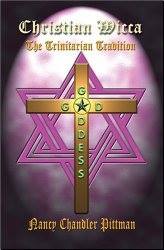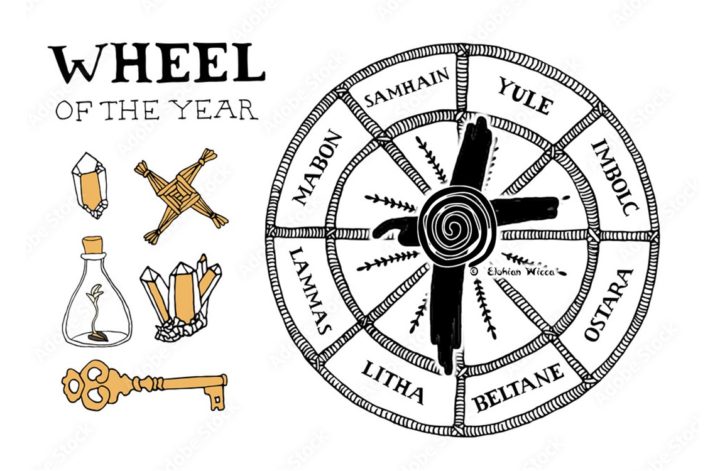
Many people are confused by our tradition called Trinitarian Wicca (from Nancy Chandler’s book Christian Wicca: The Trinitarian Tradition). I have tons of followers ask me to break down how we assimilate our path into Wicca and if the path is for them or not.
Trinitarian Wicca is Wicca foremost. The only difference between this tradition and other traditions is the pantheon of Gods and Goddesses we focus on throughout the year. Our pantheon consists of those from Gnosticism, the Kabbalah, and Canaanite times. Our focus of the God of the Wheel of the Year is that of the mythos that surround Jesus. Jesus can be seen as the Solar Lord of many other pantheons as an archetype. Alongside of Jesus we have our 13 Goddesses of the year.
January- Inanna
February- Brighid
March- Zoe
April- Barbelo
May- Shekinah
June- Mary Magdalene
July- Asherah
August- Guadalupe
September- Sophia
October- Lilith
November- Holy Spirit
December- Mother/Virgin Mary
The Blue Moon- Levannah
We combine this pantheon to achieve the Wiccan Wheel of the Year as each Goddess is in an aspect of the year that the Goddess of the Wheel of the Year falls through. Most do not see the close resemblance of the life of Jesus and his mother Mary. She births him, watches him grow into the young man he becomes, and watches him die and be reborn (just as the God of the Wheel of the Year does son, father, and sage).
In our follow up book to Christian Wicca, we have explained in detail how the Goddesses sync up to the year and create our Lunar path of the Tradition as well as explain much of what critics have came to us with low blows. The basic breakdown of our views is no different than that of other pagan pantheons or wiccan pantheons. We put the craft first and follow through with our chosen set of deities to worship. We do not use the Bible or anything referencing scripture. Those do not pertain to our beliefs at all. Our beliefs rest solely in the fundamentals of Wicca.
What does it matter that we want to name our Solar Lord Jesus whereas some have their God as Horus? People are too engrossed in a fundamentalist way of thinking as opposed to just opening their minds and embracing what we have to say. This tradition is a real tradition and works. There is no dogma we leave it at the door. There is no holy rollies, they hate us. What is the big deal? So we want to use an icon of religion as a mythological stand point as the Greeks and Egyptians did.
The point behind this is that every single one of the Goddesses we have chosen for our religion are no where found in the Holy Bible as a Goddess or most even mentioned. They were never venerated like should have been. We are now opening this back up for those who believe there was a Goddess alongside of God, and we named them for them. This tradition isn’t necessarily baby steps from Christianity. You have to be completely open to the ideals presented int his tradition and not just playing witch with a wand and Bible. Leave the Bible at the door. Its a book written by man for man to sway them into another cult of religion.
Religion is about finding your inner temple and exploring it, not finding a local temple and saying you praise God when on the inside you haven’t battled the correct demons. Jesus did not teach in churches, in synagogues, or temples but in open nature as we do. Jesus was not a Christian. In that simple statement, there is no oxymoronic use of his name in our traditions. We are not blending Christianity and Wicca. We are using an icon that Christians were forced into believing. Jesus is not Christianity; Jesus is open belief of finding within yourself the gnosis to receive enlightenment and knowledge. You don’t find those in church, but you find that in our tradition.
Let us show you the way.

